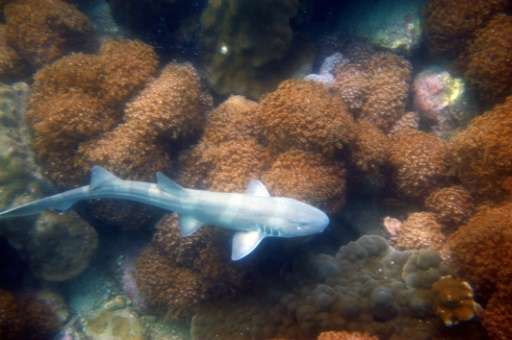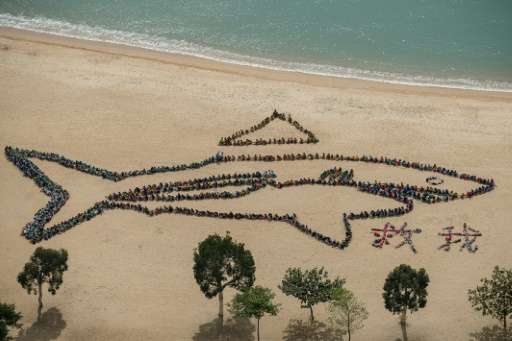Baits, underwater cameras to help count world's sharks

Using bait attached to underwater cameras at 400 reefs worldwide, scientists are embarking on their first-ever attempt to count the world's sharks, researchers said Tuesday.
By 2018, the program, called Global FinPrint, aims to provide a clear picture of where shark populations are healthy and where they are struggling, and how sharks impact the health of coral reefs.
"People may not realize it, but people need sharks," said marine biologist Mike Heithaus, a leading shark researcher from Florida International University.
As top predators in the oceans, sharks play a key role in the food chain. They help control the natural balance underwater by eating turtles and sea cows and keeping down populations that might otherwise overgraze on sea grass, which is important habitat for smaller fish and shrimp that people consume, he said.
But sharks are in trouble in some parts of the world. As many as 100 million sharks are taken from the oceans every year for their fins and meat, Heithaus said.
The Global FinPrint project is getting four million dollars in investment from Microsoft cofounder Paul G. Allen's Vulcan Inc., which funds a series of scientific initiatives on ocean health, space flight, and understanding the human brain.

"A recent International Union for the Conservation of Nature report indicated that we don't have the data we need to accurately assess the current population status for almost half of shark and ray species," said Dune Ives, senior director of philanthropy at Vulcan Inc.
"This information will help inform more effective conservation efforts."
Some historical data already exists on shark populations, including some that is based on data from underwater cameras.
But this effort should vastly increase the amount of cameras in place worldwide, particularly in areas where little is known about shark populations, such as the Indo-Pacific, tropical western Atlantic, and southern and eastern Africa and Indian Ocean islands, said Heithaus.
"This project won't give us necessarily an absolute number but it will give us a relative idea of how many sharks are in different areas, which places have healthy populations, which are areas that are of big concern," he told AFP.
The international team of researchers is being led by Demian Chapman of Stony Brook University in New York.
Other scholars involved hail from James Cook University in Queensland, Australia and the Australian Institute of Marine Science.
The data from the survey will be made available in the coming years through an open-access platform containing information on species density, habitats and diversity trends.
"Global FinPrint will help us better understand one of the ocean's great mysteries: What is happening with fragile marine ecosystems when sharks are removed?" said Chapman.
"These are hugely important questions. Many countries rely on healthy coral reefs for food security, tourism and coastal protection."
© 2015 AFP















